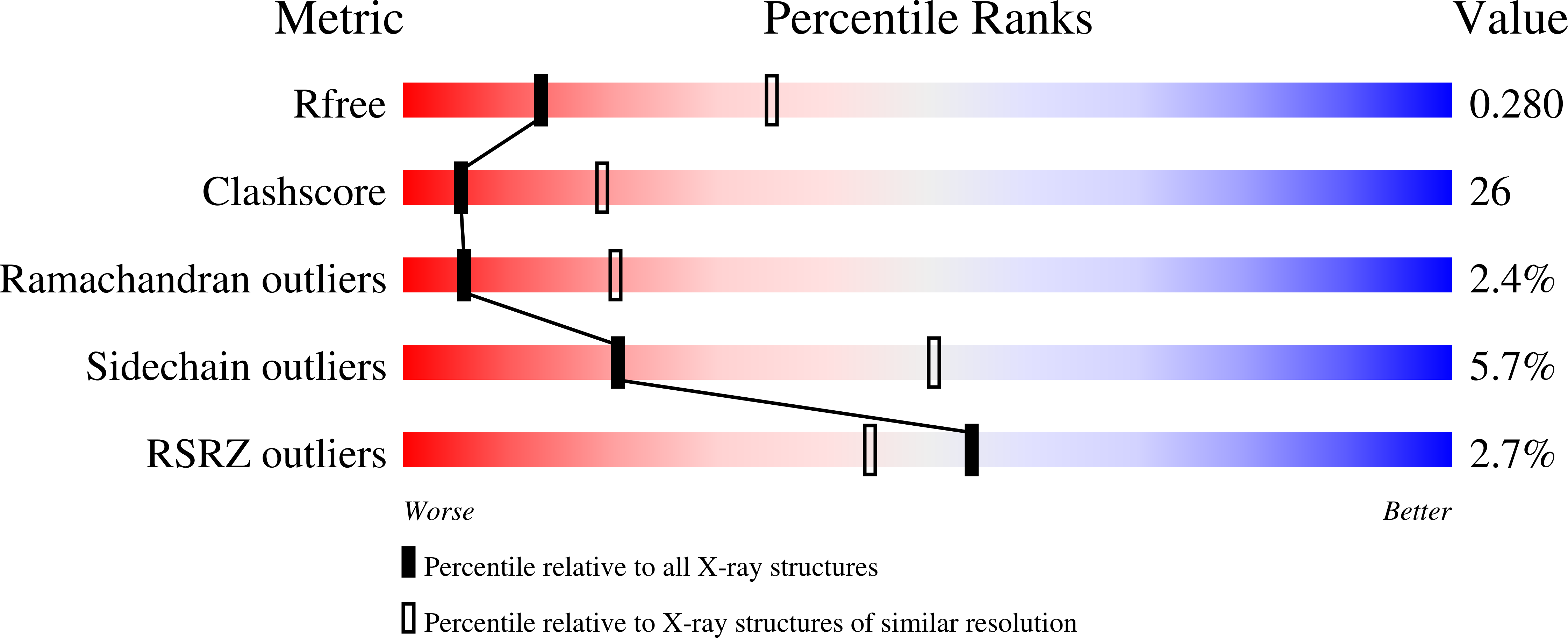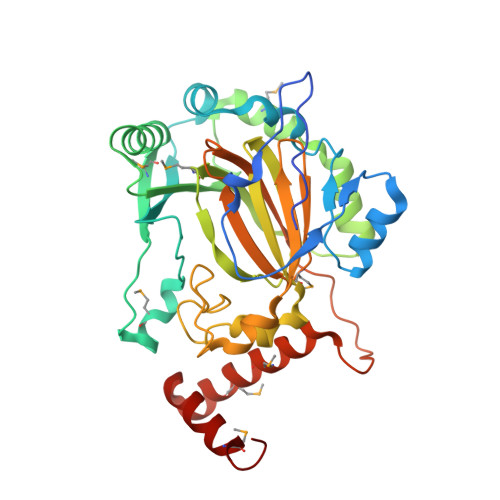Structure of human FIH-1 reveals a unique active site pocket and interaction sites for HIF-1 and von Hippel-Lindau.
Lee, C., Kim, S.J., Jeong, D.G., Lee, S.M., Ryu, S.E.(2003) J Biol Chem 278: 7558-7563
- PubMed: 12482756
- DOI: https://doi.org/10.1074/jbc.M210385200
- Primary Citation of Related Structures:
1IZ3 - PubMed Abstract:
The master switch of cellular hypoxia responses, hypoxia-inducible factor 1 (HIF-1), is hydroxylated by factor inhibiting HIF-1 (FIH-1) at a conserved asparagine residue under normoxia, which suppresses transcriptional activity of HIF-1 by abrogating its interaction with transcription coactivators. Here we report the crystal structure of human FIH-1 at 2.8-A resolution. The structural core of FIH-1 consists of a jellyroll-like beta-barrel containing the conserved ferrous-binding triad residues, confirming that FIH-1 is a member of the 2-oxoglutarate-dependent dioxygenase family. Except for the core structure and triad residues, FIH-1 has many structural deviations from other family members including N- and C-terminal insertions and various deletions in the middle of the structure. The ferrous-binding triad region is highly exposed to the solvent, which is connected to a prominent groove that may bind to a helix near the hydroxylation site of HIF-1. The structure, which is in a dimeric state, also reveals the putative von Hippel-Lindau-binding site that is distinctive to the putative HIF-1-binding site, supporting the formation of the ternary complex by FIH-1, HIF-1, and von Hippel-Lindau. The unique environment of the active site and cofactor-binding region revealed in the structure should allow design of selective drugs that can be used in ischemic diseases to promote hypoxia responses.
Organizational Affiliation:
Center for Cellular Switch Protein Structure, Korea Research Institute of Bioscience and Biotechnology, 52 Euh-eun-dong, Yuseong-gu, Daejeon 305-806, Korea.
















